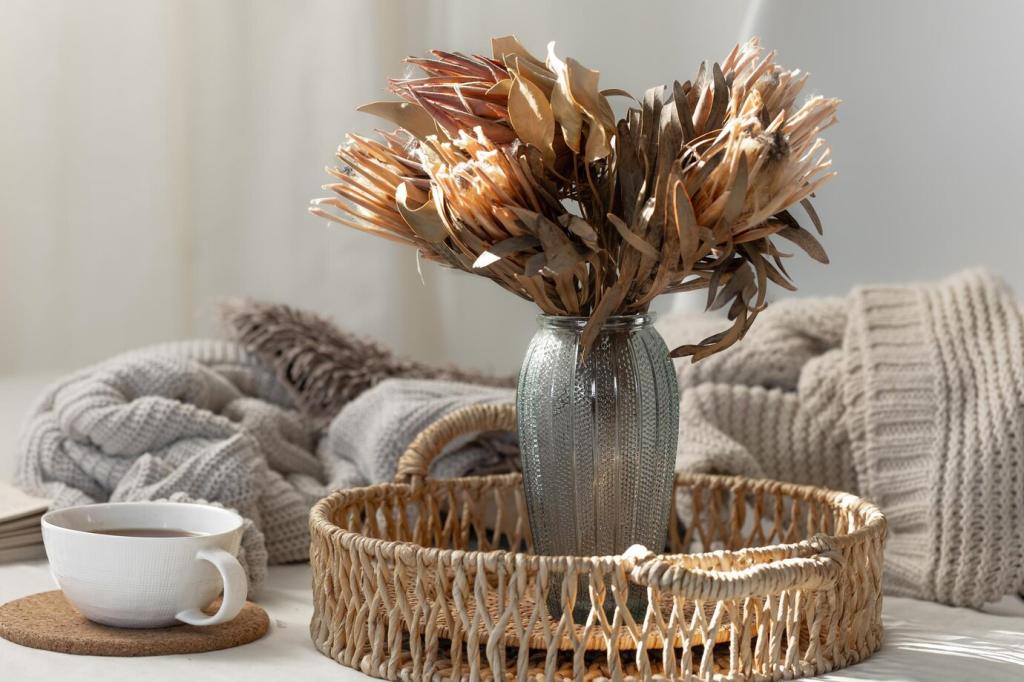Living Green at Home: The Role of Indoor Plants in Eco-Friendly Design
Why Indoor Plants Matter for Sustainable Interiors
While plants alone will not replace ventilation, research shows they can influence perceived freshness, microbial diversity in soil, and humidity balance. Combined with open windows, efficient filters, and low-VOC materials, greenery becomes part of a layered strategy for cleaner, calmer air at home.
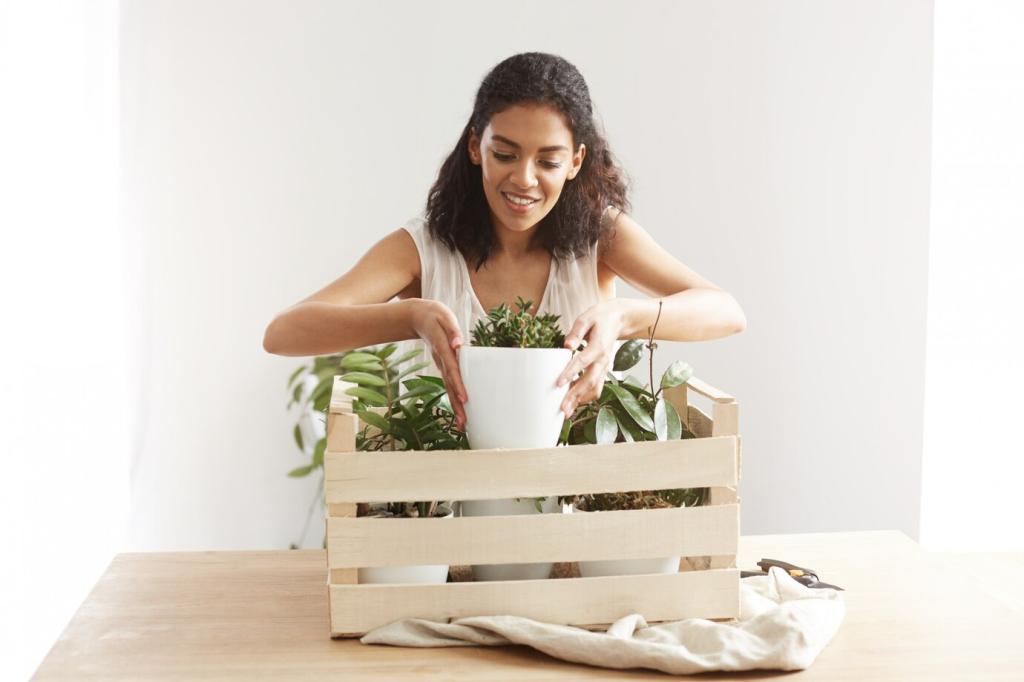
Why Indoor Plants Matter for Sustainable Interiors
Biophilic spaces link us to nature, easing stress, sharpening focus, and lifting mood. A desk fern or a towering ficus can turn routine tasks into calmer rituals. Tell us how plants change your day, and subscribe for monthly tips on designing restorative corners that actually fit your lifestyle.
Resilient Stars for Beginners
Consider snake plant, pothos, ZZ plant, and spider plant. These tough companions tolerate inconsistent watering, modest light, and occasional forgetfulness. Fewer losses mean fewer replacements, less packaging, and a smaller footprint. Which dependable plant has your back? Tell us and inspire a newcomer today.
Native and Locally Sourced Options
When possible, buy locally grown plants to cut transport emissions and improve survival rates. Ask nurseries about propagation methods and substrate choices. Explore community cuttings and neighborhood swaps before purchasing new. Your choices shape the supply chain; share your favorite local growers to help others shop consciously.
Propagation Over Purchase
Turning a single pothos into five gifts is easy. Snip below a node, root in water, then pot in peat-free mix. Propagation reduces demand for new stock, packaging, and shipping. Post your propagation success, tag a friend who needs a green start, and help our community grow sustainably.
Sustainable Containers, Soil, and Tools
Pots with Principles
Repurpose jars and tins for seedlings, then graduate to long-lasting terracotta or secondhand ceramic. Prioritize drainage holes, matching saucers, and repair over replacement. Each scuff tells a story. Show us your most creative repot, and subscribe for monthly upcycling ideas that keep materials in use.
Peat-Free, Living Soil
Peat bogs store vast carbon, so choose peat-free mixes with compost, coco coir, and bark. Boost soil life with worm castings and mycorrhizal inoculants. Healthier substrates support sturdier plants, fewer problems, and less waste. Share your favorite peat-free blends and help other readers build resilient potting mixes.
Tools That Last
Select a metal watering can, sharp bypass pruners, and brushes for leaf care. Skip trendy single-use gadgets. Maintain blades, oil hinges, and repair handles. Quality tools reduce waste and elevate rituals. Tell us which tool you have loved for years, and why it earned a permanent spot.
Light, Water, and Energy Efficiency
Designing with Daylight
Map your home’s light like a designer. Use bright east windows for ferns, softer north exposures for snake plants, and reflective surfaces to bounce sunlight deeper. Sheer curtains soften glare, reducing the need for grow lights. Share a photo of your best low-energy plant placement idea.
Smarter Watering Routines
Bottom-water in trays, check moisture with your finger or a meter, and group plants by thirst. Collect rainwater or dehumidifier condensate to avoid running taps. Right-size watering cans prevent spills and waste. What routine keeps you consistent? Comment below and help someone beat overwatering anxiety.
Low-Energy Supplementary Lighting
If you must add light, choose efficient LED grow bars on timers for limited hours. Place lights closer for better photon use, and match spectrum to plant type. Keep reflectors clean. Share your watt-per-square-foot wins, and subscribe for our practical guide to right-sizing grow lighting.
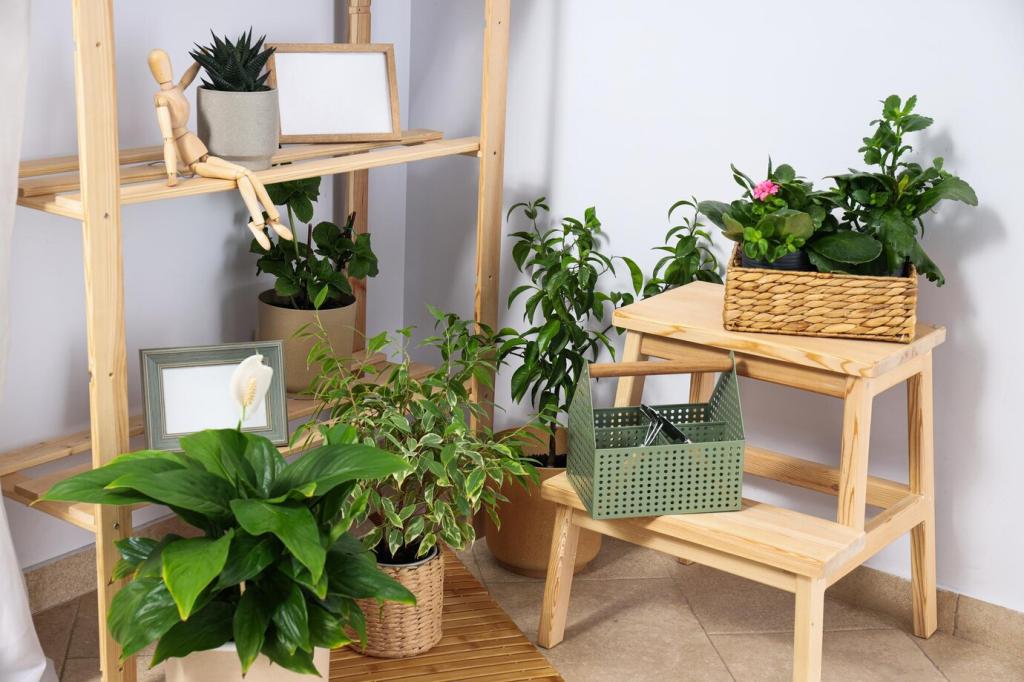
Aesthetic Strategies That Also Save Resources
Wall pockets and modular trellises turn small footprints into leafy feature walls. Choose breathable materials, plan drainage, and maintain airflow to prevent mildew. I once revived a narrow hallway with three recycled shelves and trailing pothos. Share your vertical hack and inspire a space-saving greening.
Aesthetic Strategies That Also Save Resources
A row of tall planters can zone a studio without building walls. Soil dampens sound and leaves soften light. Try an upcycled pallet box lined for moisture control. Show us how plants organize your spaces, and subscribe for our zoning guide with layouts for tiny apartments.
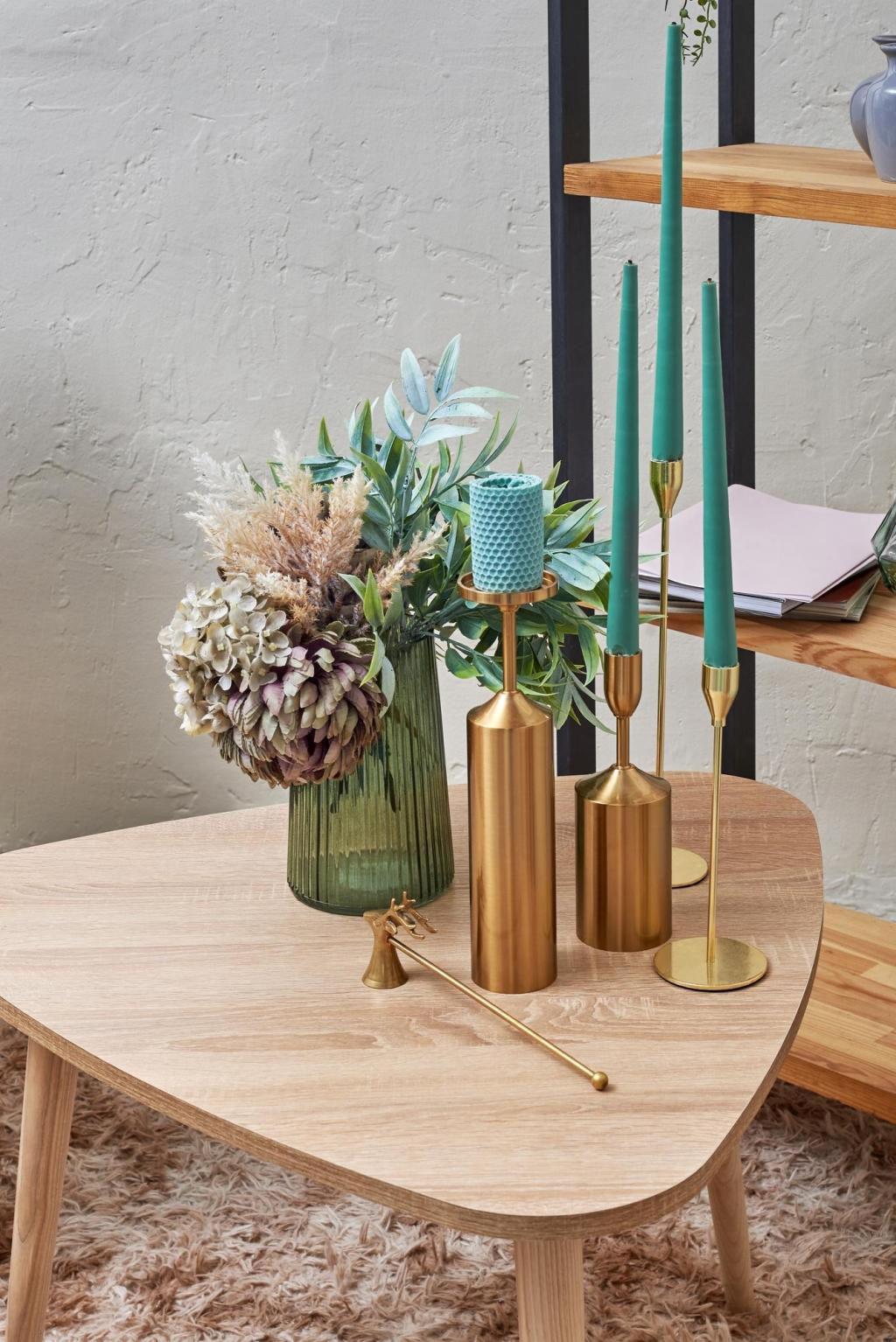
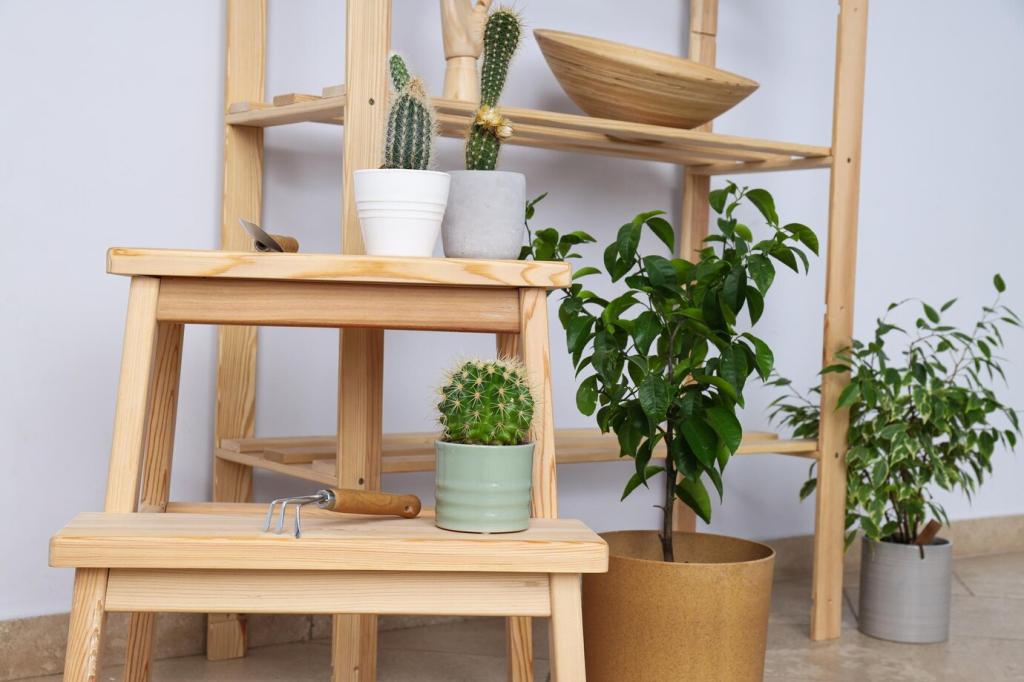
Maintenance with a Minimal Footprint
Compost trimmings, refresh tired soil with mature compost, and reuse nursery pots. Rinse and store tags for future propagation logs. A simple cleaning caddy reduces clutter and impulse buys. Share your zero-waste wins, and subscribe for monthly checklists that keep care light and sustainable.
